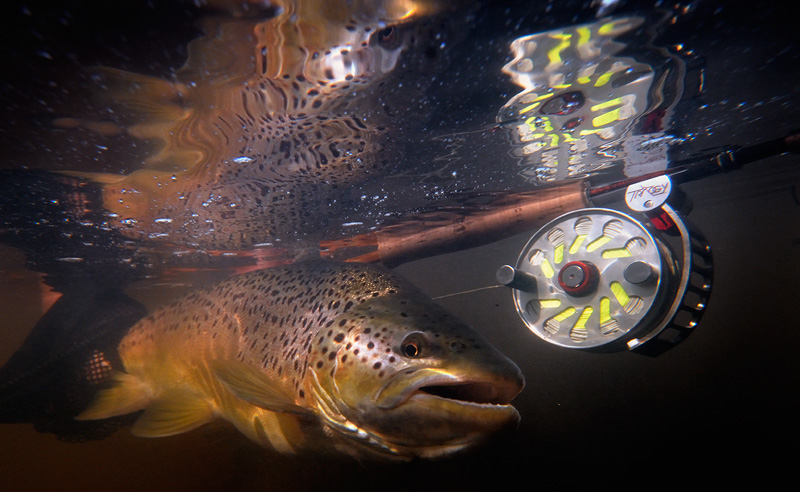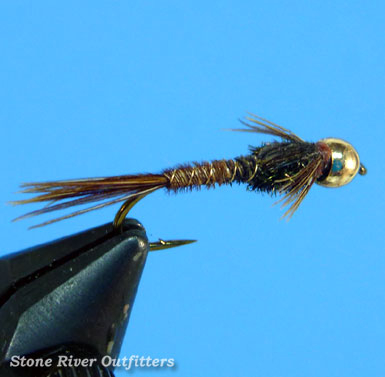
The art of fly fishing is an art form that has been practiced for thousands of years, although its complexity has increased greatly in the last one hundred. It takes a true master angler to be able to successfully tie a fly, create your own leader, and then, be able to cast with the proper technique necessary to successfully land a fish.
Fly fishing is very veresitial and can be used successfully on species ranging from saltwater tarpon to the common sunfish that resides in almost every pond across the United States. During this blog we will focus on the most common target of the fly fisherman, the trout.
The dry fly is the most recognizable fly as many people know its form. A dry fly, as the name implies, sits on top of the water, often sprayed with a floatant to keep it from sinking. It imitates an insect that has just emerged from the bottom of the stream or one that has fallen into the water from the air. While watching trout take a dry fly off the surface is extremely enjoyable, it is not always the most effective. Trout spend the majority of their time feeding sub-surface, which is where nymphs shine. While trout do spend the majority of their time feeding sub surface, those flies need to be presented very close to them in order for them to see and eat them. Trout will cover greater distances to take a dry fly off the surface than they will to take a size 16 Pheasant Tail nymph in the middle of the water column, so its all a give and take on what technique to use that day and depends on what the fish are eating, the water temperature, and any recent hatches of insects.

Beadhead Pheasant Tail Nymph
Image by Stone River Outfitters
While there is nothing wrong with using a spinning rod, as I use one often, fly fishing is more of an art form. It takes about ten minutes to teach someone to effectively cast a spinning rod. I took me about two weeks of practice to learn to Cast a fly rod in a semi-professional manner. When casting a spinning rod, one casts with the weight of the lure attached to the end of the line. When using a fly rod, the lure is weightless, so, one must cast using the weight of the line. It is a very different kind of cast and can be confusing to one accustomed to spin fishing.
When deciding to go fly fishing, the first thing you need to do is identify a likely spot for the fish to be laying in. It is important to Read the water before venturing a cast so you don’t spook any likely fish. Trout like pools and eddies so they don’t have to chase their prey. As they sit in a pool, the water gets washed past them, carrying with it, food that the trout did not have to chase to catch. They are also able to stay in one spot without exerting too much effort since the current is slower in pools and eddies.

Fish would most likely sit in the mid pool or eddy in this particular stream.
Image courtesy of Murry Fly Shop
It is also imperative to identify Where in water column the fish are feeding so you can put on the correct fly and fish it at the proper depth. This is important since if the trout are sipping mayflies off the top, it is unlikely they will take you nymph near the bottom. Everyone has their favorite fly to use, mine is a bead head pheasant tail nymph, but it would be silly for me to use that if there is a green drake hatch going on since it dosen’t “match the hatch” as they say.
Fly fishing for trout is complex but enjoyable. To be a true master of the sport, one must be an amateur entomologist to enable to Match the hatch. Different insects hatch at different times a year, so matching the hatch is important if you want to be a successful fly fisherman. Plucking an insect off the top of the water or looking under some rocks in the prospective stream is a great way to learn what is hatching and thus what the fish are eating.
While some anglers go and buy 500$ rods, expensive reels, and fill their fly boxes with one-hundred different patterns, you don’t really need to do this. While I am no expert, I have caught my fair share of trout on a fly rod. My set up is simple; I spent around 200$ on my rod, reel, line, and other gear. I have about 12 different patterns in brown, black, tan, and olive, in sizes from ten to twenty. I have found that if you are just observant to what the fish are feeding on, can read a stream and know how to present you fly in a delicate manner, you can catch trout without spending thousands of dollars on gear and lessons.